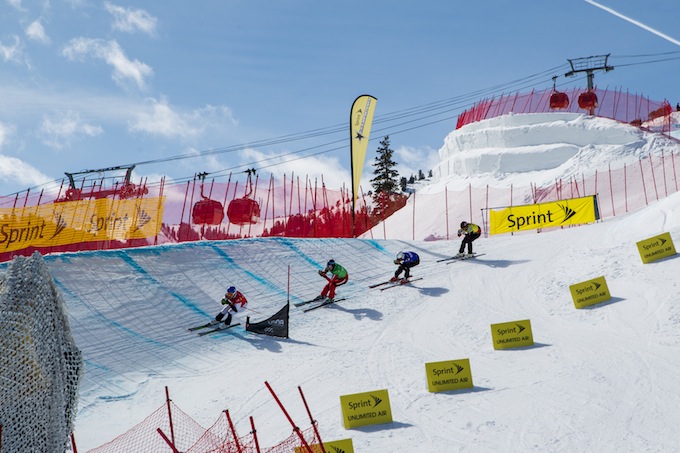USSA Sport Education Coaches Tip of the Week: July 9 2013

Each week the USSA Sport Education Department will post a Coaches Tip of the Week. The information will rotate through the ski and snowboard disciplines so check back each week to see the newest tip!
Course Setting in Skicross
{From the Freestyle/Freeskiing Competition Guide}
The Course
The slope should preferably be of a medium pitch with varied terrain. The skicross slope must be a minimum of 30 m wide and the skicross track width for 4 to 6 skiers shall be no less than 5 meters in width. Under certain conditions for short sections (50 meters or less) the course width may be a minimum of 20 meters. The ideal skicross course will allow for the construction of all or some of the following terrain features:
- banks (crescent shaped),
- double banks,
- single, double, or triple jumps,
- rollers,
- offset rollers - (single, double, triple, etc.),
- step-up jumps,
- spines and double spines,
- pro style jumps,
- hip jumps,
- table top jumps, and
- medium or long GS type turns (when building a feature is not possible).
Other terrain features can be built but safety considerations must always be a priority. Gap jumps will not be permitted under any circumstances. The features should be designed so that competitors are attempting to gain speed and not having to break before each one.
Course preparation
The track should be closed to the public at least 24 hours before the training. Terrain features and jumps must be built with sufficient time so that the snow has been compacted to insure that they can be properly maintained during training and competition. The use of artificial means is permitted (salt, water, etc.).
The setting of the gates must be done before the official inspection and should incorporate the skillful use of the terrain with the integration of terrain features and jumps into the setting. Minor adjustments in the setting may be necessary during the training to adjust the course for a smooth race line. Any changes made during training should be announced in the start area so all competitors and Team Captains are aware of such changes.
The total number of terrain features and jumps should be at the discretion of the course designer but will incorporate as many different possibilities as is practical. Blind jumps or terrain features where a skier is unable to see the landing from the take-off should be avoided. The course should be designed to separate the skiers as quickly as possible after the start (i.e. 3-5 rolls or other terrain features between the start and the first turn). These terrain features should be placed in a straight line from the start to the first turn. The first turn is usually the largest turn of the course, wide enough to accommodate all competitors at once. The start should be designed in such a way the competitors can gain the speed without using their ski poles or skating.
